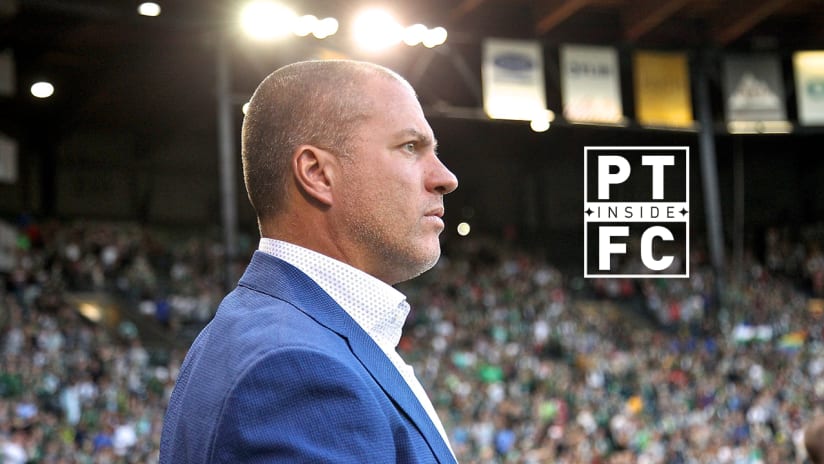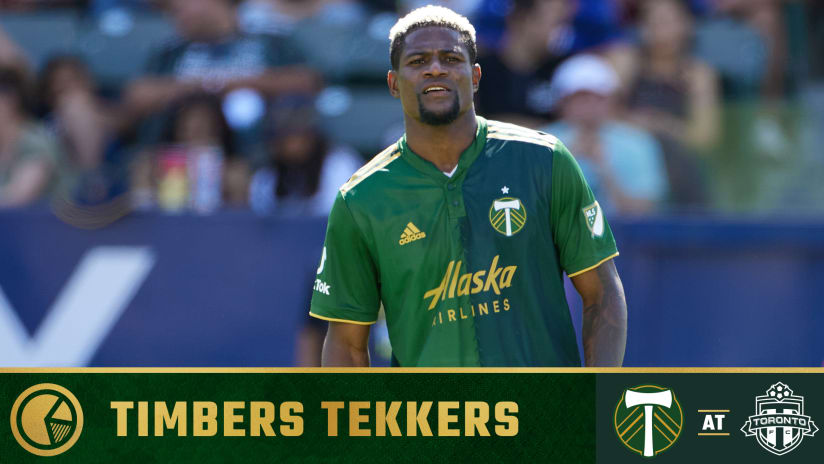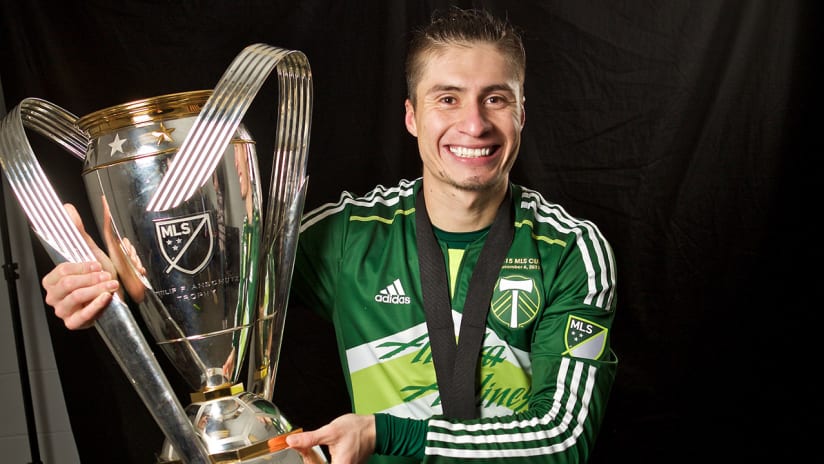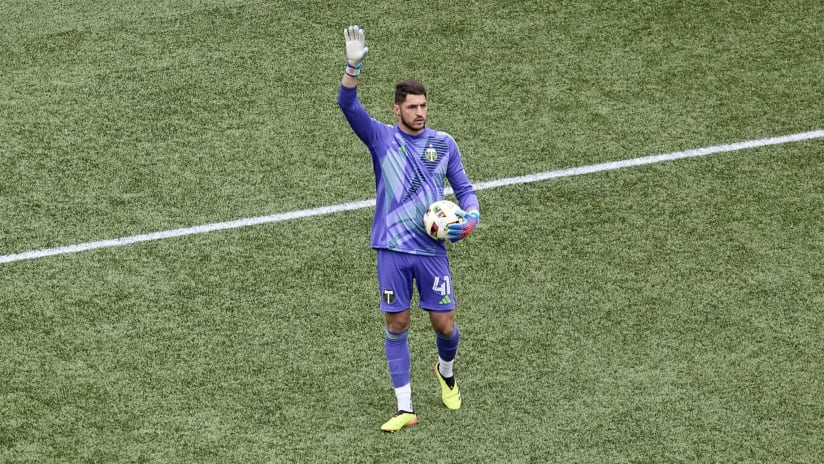The ripples of confusion, mixed with surprise and doubt, surged through the Portland Timbers’ fanbase in the hour before Saturday’s kickoff against the New England Revolution. That’s when the full effects of the team’s schedule conundrum were revealed. In the wake of a 2-0 victory at Providence Park over Toronto FC three days before, the team had to make wholesale changes, with the names left in Giovanni Savarese’s squad giving Timbers supporters new perspective on the challenges of their team’s turnaround.
In hindsight, the absences of Diego Chara, Liam Ridgewell and Diego Valeri don’t seem so surprising. The surprise was more in seeing Savarese’s broad changes. With Samuel Armenteros and Jorge Villafaña on the bench, never to see a minute in Foxborough, Massachusetts, as well as the absence of Andy Polo, six of Wednesday’s XI starters wouldn’t see the field. And the places of Dairon Asprilla and Andrés Flores, players who have combined for one goal this season, in two of the team’s three most-advanced positions? Having never seen Savarese’s Timbers go that route, fans’ suspicions were understandable.
But in Saturday’s performance came a number of reminders about Portland’s new coach – what we, as a culture around the Timbers, have learned about Savarese’s approach to managing a squad. And through the lens of those lessons, we understand Savarese’s philosophies even more.
An Italian job: Portland’s baseline catennacio
Italian is one of the four languages Savarese speaks (along with English, Portuguese, and his native Spanish), but in terms of his career, there is only a short time frame the Timbers’ boss was linked to Italian soccer: the part of 2000 that the Venezuelan international spent at Perugia and, on loan, Viterbese. Still, when you see how Savarese has approached his first Major League Soccer challenges, you see a number of traits we normally associate with an Italian outlook.
Perhaps the most prominent of those traits is evident in Savarese’s formations, almost all of which have featured three deep, central midfielders. This isn’t an exclusively Italian approach, but in formations like the 4-3-2-1 and 4-3-1-2, Portland’s often relied on the principles of a modern catenaccio – a philosophy (most readily, and occasionally clumsily, associated with Italy) built on the primacy of deep, reactive, defensive play and the opportunities born there from.
Catenaccio is a bit of a buzzword among those interested in soccer tactics, as it is often, generally applied to the idea of sitting back, letting opponents play with the ball, and taking advantage of the openings their attacking play reveal. The history of the style is a little more detailed than that, but in the modern game, it tends to refer to a mindset as much as a set of tactical principles. Wait, wait, wait … then pounce? That’s a type of modern catenaccio: one that Portland executed to perfection in its spring, 3-0 victory over New York City FC; one that became a foundational philosophy as the Timbers have built.
That a word like catenaccio is even being evoked now, eight months into Savarese's tenure, is a sharp contrast to what we had assumed about the coach. When the Timbers' new boss arrived in Portland, the terms "high press" and "high (defensive) line" became quick clichés in his media availability, as if they were unwavering, endemic parts of a dogmatic approach. But two weeks into the season, another trait, one more readily associated with Savarese's New York Cosmos tenure, began to shine through: tactical flexibility. In the NASL, Savarese had a core philosophy about how he wanted his teams to play – one that's not so dissimilar to what we've seen, here in Portland – but how that approach was implemented on a week-to-week basis was different. Early in the Timbers' season, Portland had to drastically change how they implemented Savarese's style, but the basic way they viewed the field, moved the ball, attacked space and developed their tempo hasn't changed. There is, at their core, a way Savarese's teams play soccer.
That may be part of the reason why, over the last two months, Savarese has often talked about expanding the way his team plays going forward, alluding to the fact Portland can’t rely on catenaccio (a word he has never used) forever. On Saturday, though, the constraints of MLS’ schedule meant going back to those principles, taking care of the defensive part of the game, first, and seeing how the game developed.
One game at a time; one challenge at a time
That not only potentially explains the team’s first-half approach but also, potentially, its selection; or, at least, it provides a rationale. Working with a limited squad, Savarese chose a team that was going to be able to execute defensively. He started a player up top (Asprilla) who, in the face of New England’s pressure, was going to provide an outlet and move the game into the Revolution’s half. In where players like Flores, Guzmán and others were deployed, the Timbers weren’t employing their most potent look, but there were choosing a team that could keep them in the game. They had a group that could limit the number of chances for the opposition and, once New England pressed itself out of shape and into tired legs, be changed with the attacking artillery the team held in reserve.
At that’s what happened. Though the teams exchanged goals in the middle of the second half, both sides collected very few decent chances on target. Portland was able to take a game that could have been 90 minutes of physical exertion and reduce the window where it truly opened up. And, within that time, the Timbers were able to generate an extra-time chance that could have secured two more points on the road.
Amid that entire strategy, though, is a recognition of how soccer often plays out. As Portland fans learned 10 days ago, when the Seattle Sounders took a 1-0 result from Providence Park, matches aren’t always won by teams that play better over most of the 90 minutes. They’re won by the ability to execute in moments. That’s how the Timbers eventually broke through against Toronto. That’s how Portland took a point from New England (and why they didn’t take more). Not having any of the bench’s Lucas Melano, Jeremy Ebobisse, Tomás Conechny and Armenteros arsenal on the field from the onset acknowledged that Saturday’s game need not be won at the opening kickoff, or even over the opening hour. They need only be ready when the game changed and Portland had the opportunity to pounce.
Jeff Attinella’s injury may have changed that. Savarese had to burn a sub taking him off for Steve Clark. And, come time to make his final change, the Portland boss elected to secure the defense, bring on Bill Tuiloma to reinforce the midfield, and not pursue the game with another forward. Thanks in part to the injury, the game didn’t play out as planned, even if, ultimately, the plan was good enough to deliver the Timbers a valuable result.
What it also delivered was some reminders about Savarese, as well as hints of his influences. Saturday’s match and the season’s broader approach haven’t been a pure, textbook example of catenaccio in action, but the belief underpinning it – the idea that a strong defense and patience will leave opportunities to bite an opponent – are something the Timbers can employ at any moment. An outlook on matches that don’t see them as spans to dominate but stories that unfold was evident in how Savarese used his resources. And, in the acceptance of what he had at his disposal, Saturday reminded us that the new Portland boss is not wedded to one, unwavering approach, but is instead willing to adapt some core, basic tenants to meet a given 90’s challenge.














